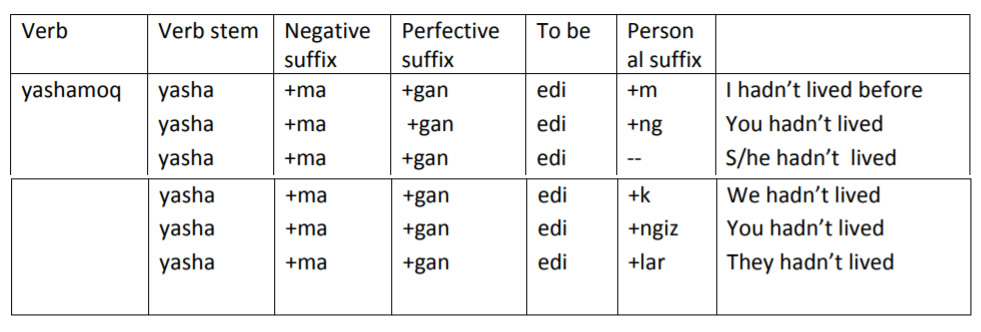Language/Northern-uzbek/Grammar/Past-Perfect-Tense
This form is used when talking about completed action in a distant past, before the recent action took place. It is formed by adding edi – use to (that is the past participle), plus the possessive type of personal suffixes. The associated words with that tense are before – avval, oldin, ilgari.
For example:
- Men Fargo’onada bedana palovini yegan edim. Men Toshkentdan avval Gulistonda yashagan edim.
The negative is formed by adding to the verb stem the suffix -MA, plus the suffix -GAN, followed by the past ending edi plus the personal suffix
The negative may also be formed using the verb stem plus the suffix -GAN, followed by the negative copula emas, followed itself by the past copula edi plus the personal suffix.
- kelgan emas edim I hadn't come
- kelgan emas eding You hadn't come
- kelgan emas edi He/she/it hadn't come
- kelgan emas edik We hadn't come
- kelgan emas edingiz You hadn't come
- kelgan emas edilar / edi They hadn't come
Don't hesitate to look into these other pages after completing this lesson: Pronouns, Future Tense, Orthographic rules & Conditional Mood.
Sources[edit | edit source]
Other Lessons[edit | edit source]
- Present Continuous Tense
- Negation
- The verb KELMOQ – to come
- Compound verb
- Adjectives
- Postpositions
- Expressing a desire fo an action
- Formal and informal YOU
- Future Tense
- Comparative Adjectives



